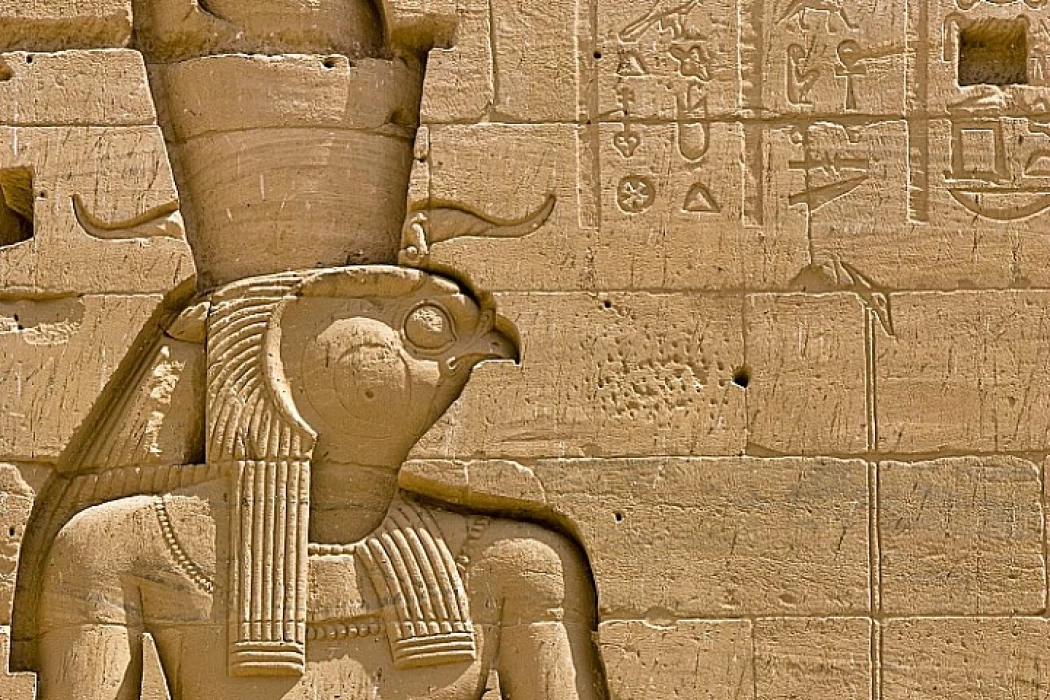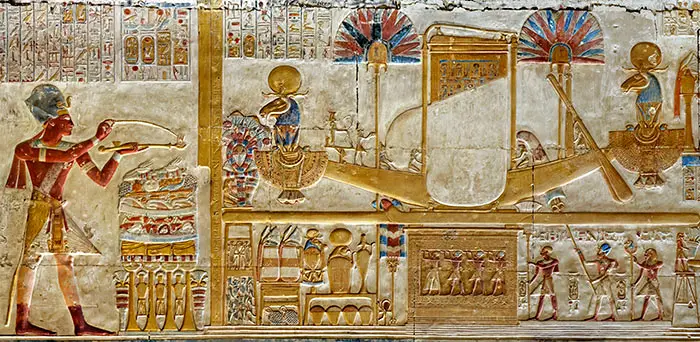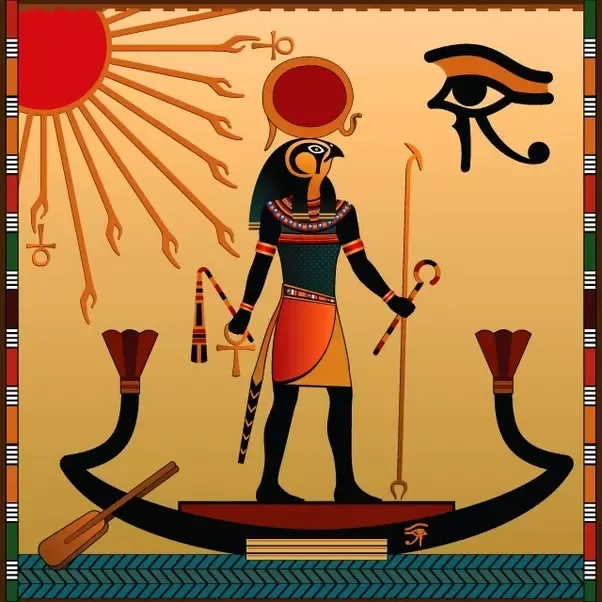Across the vast history of ancient Egyptian myth, few figures shine as brightly as Amun-Ra, the potent union of two venerated gods: Ra, the sun deity of Heliopolis, and Amun, the secret god of Thebes. Through the sun’s voyage across the sky, this divine synthesis formed a deity of unmatched significance, symbolizing the dual principles of creation and everyday rebirth.
The Majesty of Amun-Ra King of Egyptian gods
Envision the sun rising over the lush banks of the Nile, bathing the temples and pyramids dotted around the area in golden light. This heavenly display was not only a regular occurrence but also a powerful representation of Amun-Ra’s power. Amun-Ra, also called the “King of Egyptian Gods,” was regarded as the supreme ruler and creator, the source of all life, and the protector of the universe’s order (ma’at).

King of Egyptian gods – A Tale of Two Deities
The tale of Amun-Ra kicks off in the New Kingdom (c. 1550-1070 BCE) when Thebes became the capital of a united Egypt. In this city, Amun, at first a local god linked to fertility and wind, grew in importance to become the main deity of the strong Theban priests. At the same time, in Heliopolis, Ra ruled as the sun god and creator standing for the sun’s life-giving power and the order of the universe.
The Synthesis of Power
When Egypt was enlarging its territory and consolidating under the leadership of a single king, pharaohs wanted to bring together its various religious beliefs. This meant that the sun god Ra who was associated with light and life force entered into union with Amun Signifying this trend toward unification and syncretic worship practices. Consequently, Amun-Ra became portrayed as a human figure wearing a solar disk as well as a coiled cobra (uraeus) which denoted solar sign representation and royal power of the gods.

Worship and Devotion
Centers of immense wealth and religious fervor became temples dedicated to Amun-Ra like the magnificent Karnak Temple in Thebes. Seeking prosperity for the pharaoh, fertility for the land, and the eternal renewal of life, priests offered daily rituals and ceremonies to honor Amun-Ra.
Amun-Ra is definitely more than just a god because he represents the never-ending human search for meaning in the cycles of life and death, also with an understanding of the universe and its energies. His tale serves as a solid reminder of the close relationship that exists between nature, divinity, and the sun’s enduring voyage across the sky.



0 Comment